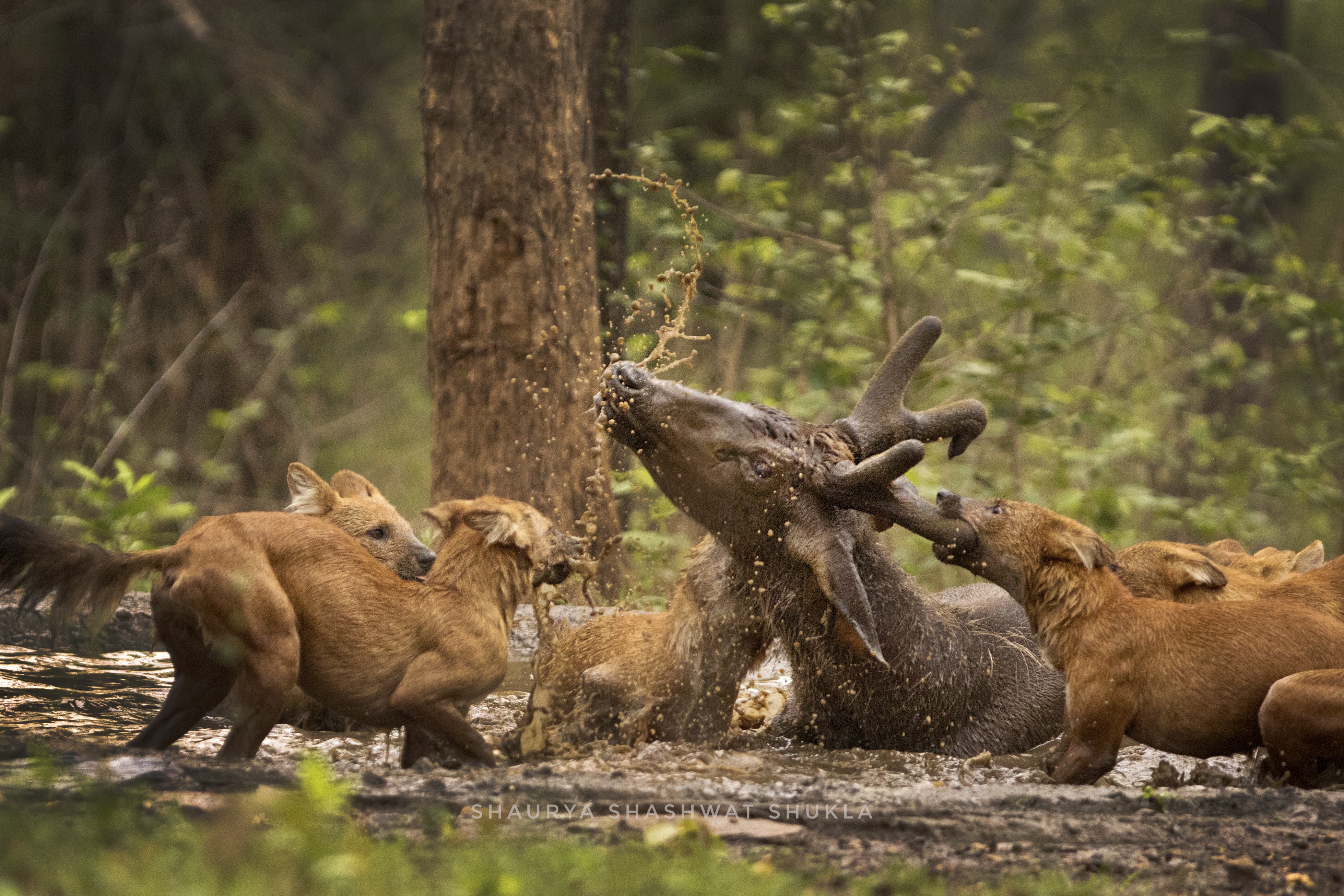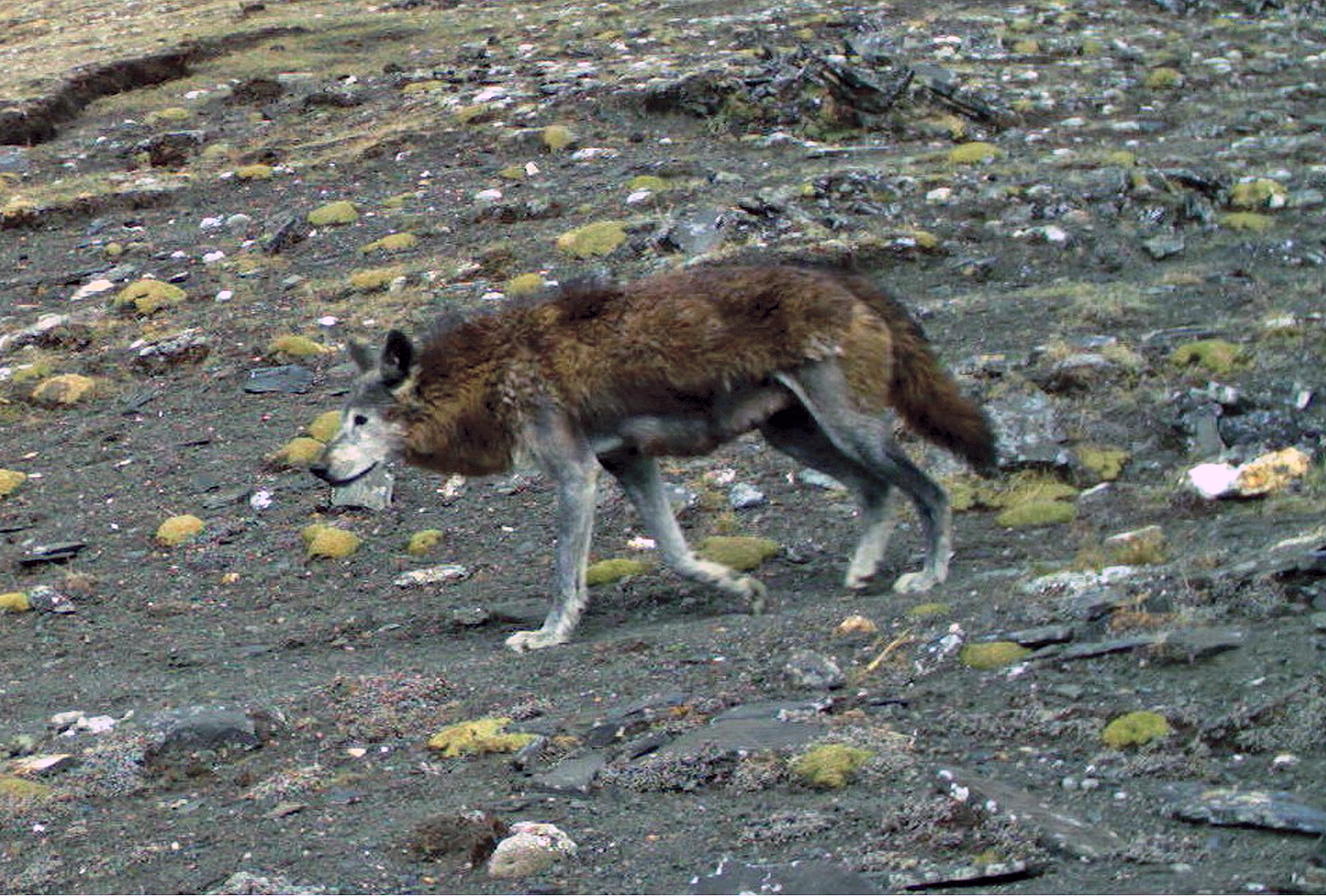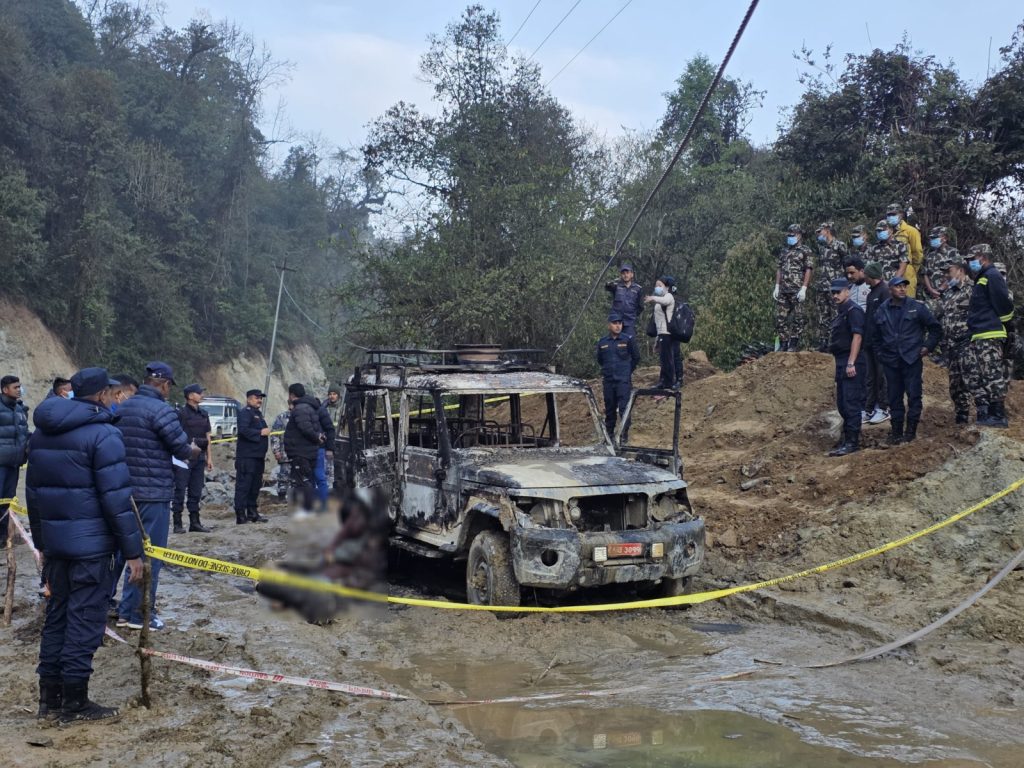
As Hindus around the world celebrate the festival of lights, also known as Tihar (Diwali or Deepawali), the Nepali variation of the event sees the faithful venerate their dogs as protectors and loyal human companions.
On the second day of the five-day Tihar festival, devotees adorn their canine friends with garlands and feed them delicacies. The practice is seen as a way of pleasing Yama, the god of death and justice, who in Hindu lore has dogs as his vahana, or assistants.
But as the dogs in cities, towns and villages, who suffer ill-treatment the rest of the year, enjoy their day in the limelight, their distant cousins in the country’s forests lead treacherous lives amid human persecution, the spread of disease, wildfires, and competition with other predators.
The Asiatic wild dog (Cuon alpinus), also known as the dhole or Indian wild dog, is one of these, “an endangered species that we don’t talk about enough,” says researcher and dhole conservation campaigner Ambika Khatiwada.
The dhole, the only surviving member of its genus, once roamed large swaths of Asia, from Afghanistan in the west to Laos in the east, and Russia in the north to India in the south. Today, it is limited to fragmented habitats in Nepal, Bangladesh, Bhutan, Cambodia, China, India, Indonesia, Laos, Malaysia, Myanmar and Thailand. Its presence remains uncertain in Pakistan and the Korean Peninsula.
There are many unknowns about the animal, according to an assessment by the IUCN, the global wildlife conservation authority. The global population is estimated at no more than about 2,200 mature animals, and maybe as low as about 950, with a declining trend. In Nepal, there are an estimated 250-750 dholes, mature and otherwise.
“In the case of Nepal, at least, I believe that their hunting style is one of the reasons dholes are vanishing,” says conservationist Hem Sagar Baral, co-author of the seminal book Mammals of Nepal.
Dholes, he said, are different hunters than tigers and leopards, Nepal’s better-known predators, which are ambush hunters that use camouflage to stalk or sit and wait for their prey and then launch a surprise attack. Dholes are pursuit pack hunters that run down their prey, including domestic livestock, over long distances.

This means that as apex hunters such as tigers and leopards remain hidden, sometimes in plain sight, humans can easily see dholes hunting. This leaves them more likely targets for persecution by aggrieved livestock farmers, Baral says.
A 2015 study looking at the dietary composition of dholes through their droppings in Dhorpatan Hunting Reserve in western Nepal found that around 20 per cent of their diet consisted of domestic livestock. This high rate of livestock predation may be responsible for fueling negative public attitudes toward the wild dog, the study noted.
The dhole also faces growing competition from other top predators. At the second meeting of the IUCN Dhole Working Group in Nepal earlier this year, participants discussed whether the increasing tiger numbers in Chitwan National Park could have pushed the dhole population there away and toward neighbouring Parsa National Park.
Other studies have also indicated that the presence of tigers and leopards in Nepal’s lowlands could have pushed dholes to the Chure range, the smallest of the hill ranges that make up the Himalayan foothills.
Another potentially serious competitor that researchers are keeping an eye on is the Himalayan wolf, which until recently had vanished from certain high-altitude areas, especially in the eastern Himalayas. The wolf, which was subjected to heavy persecution and retaliatory killings, now is recolonising the Himalayas, researchers say.
Due to various reasons, which may include climate change, dholes may be moving to higher altitudes, putting them in direct competition with the wolves.
“Various studies show that there may be a habitat overlap between the two species,” Khatiwada says. “But we don’t know what their interaction looks like.”
Veteran conservationist Karan Shah expresses scepticism, however, about a looming Himalayan dogfight, suggesting a degree of historical coexistence. He says dholes and wolves may have shared habitats in the past also, but these episodes may not have been documented.

Fires and disease
Then there is the threat from forest fires, which “may have also had adverse impacts on dholes and led to a decline in their population,” Baral says.
During the dry season, fires are common across the country, and climate change is expected to make them more frequent and intense.
The possibility of disease spread from feral and domestic dogs is another persistent threat to dholes. A recent study shows canine distemper virus is already affecting apex predators such as tigers and leopards. Campaigners say they’re worried the disease may have also affected dhole populations.
Khatiwada says that although the challenges facing dholes are enormous, they can be addressed. “The threats to dholes can be minimised by addressing human-dhole conflict through consultation with local communities and developing and implementing national and regional plans for their long-term conservation actions,” he says.
Nepal has a long and successful track record developing and implementing conservation action plans for various species such as tigers, vultures and snow leopards. Such an approach could also be adopted for dholes, Khatiwada says.
On the research front, participants at the recent dhole meeting say more socioecological research is needed in Nepal to assess the extent of human-dhole conflict and implement compensation and insurance mechanisms in response to livestock predation. They also point to the need for increased transboundary efforts across dhole range countries to ensure the connectivity of the wild dog’s populations.
This story first appeared on Mongabay and Onlinekhabar is republishing it under a Creative Commons licence.
























